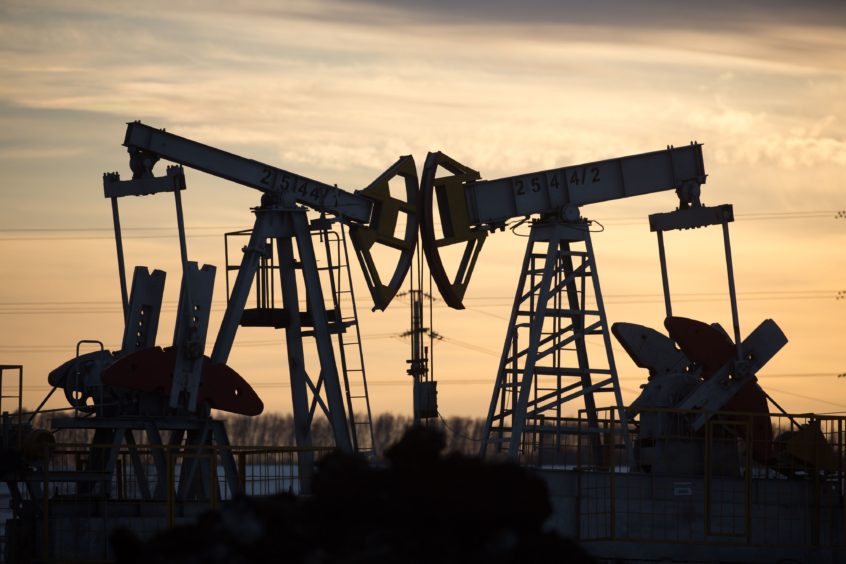
Russia will be able to outlast Saudi Arabia if the pair fail to clinch a deal to cut production to prop up oil prices during OPEC+ talks on April 9.
The last oil price crash in 2014 caught Moscow unprepared. At that time, the breakeven oil price for Russia’s budget was above $110 per barrel, and its central bank was forced to raid the country’s foreign reserves to prop up the falling ruble. Russia now needs only $42 per barrel of oil to balance the books, President Vladimir Putin told officials on April 3.
Russia has learned lessons from previous price crunch, having streamlined public spending and taken steps to boost tax revenue in recent years. The decision to free float the ruble five years ago has also helped.
In contrast Saudi Arabia, whose economy is far more reliant on oil revenues, needs its crude to sell at $84 per barrel to cover spending plans this year.
Russia also has Saudi Arabia beat in terms of foreign reserves, currently estimated at $550bn versus the kingdom’s $500bn.
Moscow has the edge in negotiations in Riyadh. But this is not to say low prices will not take a significant toll on the Russian economy, already reeling from the impact of coronavirus (COVID-19) pandemic. Russia’s ability to compensate workers and businesses for losses caused by ongoing lockdown will be limited.
A shrinking economy and higher import bills risk undermining Putin’s popularity. Public approval has already slumped to a six-year low, polls taken in January show, as standards of living stagnate.
Russia’s oil industry is more than capable of handling the current price pressure. The country’s top five producers enjoyed averaged upstream costs of only $5.6 per barrel of oil equivalent (boe) in 2019, Moscow-based ratings agency ACRA estimates. Thanks to the ruble’s recent decline, this falls to only $4.7.
One of the harshest critics of Russia’s pact with Saudi Arabia has been Igor Sechin, a close ally of Putin and the head of Russia’s national oil company Rosneft.
Rosneft had stood to make the biggest gains from the end of supply quotas. Through a series of controversial acquisitions in the 2000s, the producer landed rights to many of the largest oilfields in Russia’s relatively undeveloped Eastern Siberian basin. But it has had to hold back some of these projects because of OPEC+ constraints.
After OPEC+ talks collapsed in early March, Rosneft had set its sights on a 280,000-300,000 bpd ramp-up in production once quotas expired on April 1, industry sources tell Energy Voice. It quickly began setting this plan in motion, gaining regulatory approval to add extra well clusters at some of its fields.
This was before the full impact of the COVID-19 pandemic on fuel demand became clear, and Rosneft promptly scuppered these plans.
ACRA director Vasilii Tanurcov estimates that Rosneft could add over 300,000 bpd of supply in April, while fellow state firm Gazprom Neft could boost output by 50,000 bpd and private operator Tatneft by 20,000 bpd. Overall Russian production averaged 11.3mn bpd in March.
Fitch Ratings is sceptical that significant gains can be achieved.
“In the current environment, I don’t think any Russian company would be able to increase production meaningfully,” Dmitry Marinchenko at Fitch Ratings tells Energy Voice. “Most if not all will need to cut capex if low oil prices persist.”
This would suggest Russia’s threat to ramp up production is hollow from an economic point of view. However Saudi Arabia, even with its lower costs, will also have to slash spending, limiting investment in growth. Saudi Aramco has already said it will lower capex to $25-30bn this year, from $32.8bn in 2018, and it is likely to make a further revision if current conditions persist.
In any case Rosneft, which accounts for over 40% of Russian output, is well-placed to weather the downturn. Thanks to the ruble’s decline, its costs have dropped to $5.1 per boe.
The company also benefits from greater exposure to the Asia-Pacific market than some of its peers. European fuel demand has been hard hit by COVID-19 lockdowns, driving down the price of Russia’s Urals oil grade. On the other hand ESPO oil, produced at mainly Rosneft-operated fields in Eastern Siberia and sold in Asia, was trading in late March at a record $11 per barrel premium to Urals, VTB Capital estimates.
Fellow state producers Gazprom Neft and private operator Surgutneftegaz enjoys even lower costs, of $3.3 and $3.5 respectively. At the higher end of the spectrum are private firms Lukoil and Tatneft, with still comparatively low costs of around $5.5. Both rely on mature fields for a significant portion of their production, and Lukoil is also developing higher-cost projects in the Caspian Sea. The oil firm is grappling with output decline in Western Siberia, weakening its position even further.
High levels of foreign-denominated debt were a key concern for Russian producers when markets last took a negative turn in 2014. But since then they brought debt to manageable levels and have relied more on domestic financing. Rosneft, despite making a series of costly acquisitions in recent years, had a net debt to EBITDA ratio of only 1.4 at the end of 2019. ACRA does not expect the ratio for the largest Russian firms to exceed 2.0.
Smaller Russian producers will naturally fare worse, as they are less able to benefit from economic of scale and access state support. But the overall picture is of an industry ready to handle a prolonged downturn.